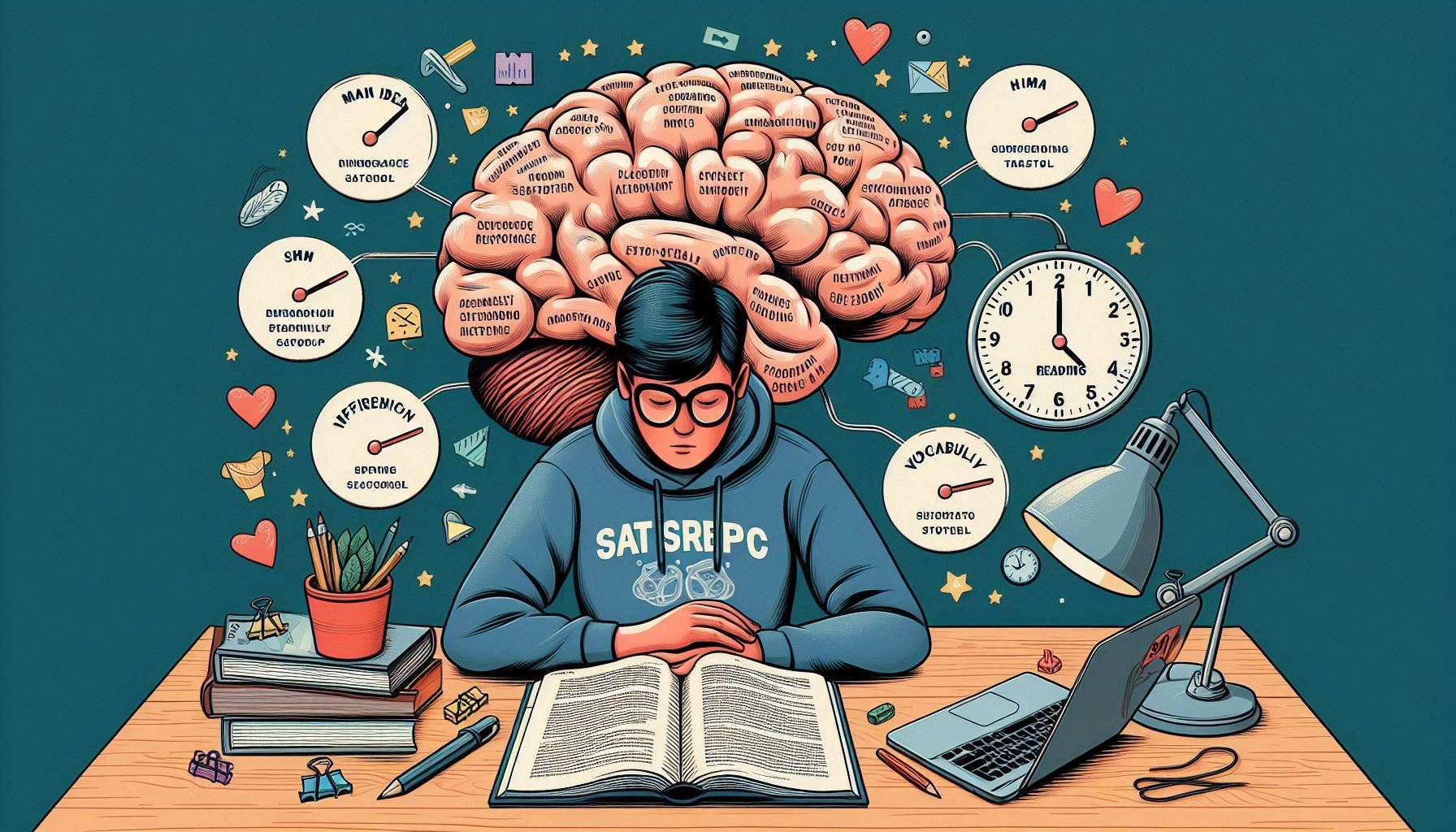🎯 Introduction:
Why the SAT Reading Section Matters
The SAT Reading section isn’t just about reading—it’s about thinking. It tests your ability to analyze texts, understand ideas, and interpret evidence quickly and accurately. Whether you’re aiming for an Ivy League school or just trying to meet your college requirements, a strong reading score can make a big difference.
If you’ve been struggling with time management, tricky questions, or dense passages, you’re not alone. The good news? With the right strategies, you can boost your SAT Reading score significantly—even in a short amount of time.
Let’s dive into actionable tips and a focused plan to help you master the SAT Reading section.

📘 1. Understand the SAT Reading Structure
Before anything else, get familiar with what you’re up against:
5 Passages
52 Questions
65 Minutes Total
The passages can include:
A classic or contemporary literature piece
A U.S. founding document or global conversation text
A science article
Two social science or historical texts (sometimes with graphs or charts)
Tip: Know the types of passages so you can develop specific strategies for each one.
⏱️ 2. Master Time Management
You have just over 1 minute per question, so time is critical. Most students lose points not because they don’t know the answers—but because they run out of time.
How to Improve:
Practice reading faster without losing comprehension.
Don’t read every word—scan for key ideas, main arguments, and tone.
Spend no more than 5 minutes reading each passage and 8-9 minutes answering its questions.
🧠 3. Focus on the Big Picture First
The SAT loves to test your understanding of the main idea of a passage.
How to spot it:
Read the first and last paragraphs carefully.
Ask yourself: Why was this passage written? What’s the author’s main point or argument?
Once you have the main idea, the smaller details become easier to navigate.
💬 4. Use Evidence-Based Strategies
Some SAT Reading questions ask you to choose two answers—one for the question, and one that backs it up with textual evidence.
Strategy:
Answer the first question without looking at the evidence choices.
Then, use your answer to find the evidence that best supports it.
If none fit, reconsider your first answer.
🔍 5. Don’t Overthink Vocabulary in Context
You’re not being tested on how many fancy words you know. Instead, you’ll be asked what a word means in a specific sentence.
Tip: Always plug the word options back into the sentence and read it aloud in your head. Choose the one that fits best with the tone and context, not just the dictionary meaning.
📊 6. Practice with Realistic Materials
Don’t rely solely on generic reading exercises.
Use:
Official SAT practice tests (College Board)
Khan Academy (free and SAT-aligned)
High-quality practice books like The Princeton Review or Kaplan
🧾 7. Review Your Mistakes Strategically
Every mistake is a learning opportunity.
Ask Yourself:
Did I misread the passage?
Did I rush and miss details?
Did I choose an answer that “sounded right” instead of finding evidence?
Keep a mistake log and revisit it weekly to track your progress.
🧠 8. Train Your Brain for the SAT Style
The SAT has a specific tone and pattern in how it asks questions.
Do This:
Practice two reading passages every day.
Focus on understanding why the correct answer is right and why the others are wrong.
This builds not only knowledge but also test-taking instincts.
💪 9. Build Reading Stamina
Reading 5 passages in 65 minutes requires mental endurance.
Improve by:
Reading long articles or essays daily
Practicing full reading sections without breaks
Simulating test-day conditions at least once a week
📝 10. Stick to a 30-Day Plan
If you have limited time before the SAT, build a realistic schedule:
Week 1: Diagnose your current level
Week 2: Focus on accuracy
Week 3: Improve timing and consistency
Week 4: Full-length reading sections and mock exams
✅ Final Thoughts:
Consistency is Key
Improving your SAT Reading score isn’t about cramming—it’s about daily, focused effort. Even just 30 minutes a day can make a big difference if you’re using the right strategies.
Stay patient, track your progress, and keep practicing smart.
You’ve got this.